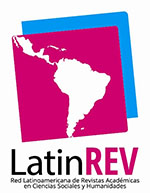Financial education as a support for entrepreneurship in Technical High School students
DOI:
https://doi.org/10.47230/revista.ciencia-lideres.v3.n1.2024.10-17Palabras clave:
Innovation, Entrepreneurship, Educational contextResumen
Educational programs in the field of finance and entrepreneurship as an early career boost are a goal in the Ecuadorian educational system, therefore the objective of this research was to analyze the impact of financial education on entrepreneurship of young high school graduates at an early age. age sustainably. To analyze the research problem, a prior study of the educational, economic and social context of current educational programs was carried out. For this purpose, a documentary-bibliographic review of works related to the topic was carried out, with which the theoretical content was substantiated and contrasted. The research had a qualitative approach. It was concluded that the main difficulties in guaranteeing the sustainability of ventures are an inadequate financial culture, as well as the lack of innovation in educational establishments that allows competitiveness in local markets.
Descargas
Citas
U, Inc. (2017). Teach Make a Diference. http//teach.com
Alberto Mogrovejo, E. V. (2021). EMPRENDIMIENTO E INNOVACIÓN EN ECUADOR; UNA ALTERNATIVA CON PROPUESTAS. Cotopaxi, Ecuador: Revista de Ciencias Administrativas y Económicas.
Anchundia Baque, M., & Barrezueta Ayala, A. (2017). PROPUESTA DE ASESORÍA EN GESTIÓN DE EMPRENDIMIENTOS EN EL CANTÓN DURAN. Guayaquil: Universidad de Guayaquil.
Ardichvili, A., Cardozo, R., & Ray, S. (2003). A theory of entrepreneurial opportunity identification and development. Journal of Business Venturing.
Banco Interamericano de Desarrollo. (2020). Escalando la nueva educación. Innovaciones inspiradoras masivas en América Latina. Washington.
Carrillo, L. L. (2014). El emprendimiento como motor de crecimiento económico. BICE.
CEF. (2018). Creative Education Foundation. http://www.creativeeducationfoundation.org.
Christensen, C. (1997). The Innovator's Dilema When New Technologies Cause Great Films to Fail. Boston: Harvard Business School Press.
De Bono, E. T. (2019). El pensamiento creativo. El poder del pensamiento lateral para la creación de nuevas ideas. México D.F.: Paidós Mexicana S.A.
Dorf, B. &. (2013). Manual del Emprendedor. Chile.
Ecuador, M. d. (2017). Educacion.gob.ec. https://educacion.gob.ec/wp-content/uploads/downloads/2017/02/Guia-de-implementacion-del-Curriculo-de-Emprendimiento-y-Gestion-BGU.pdf
emprendimiento.ec. (2021). https://emprendimiento.ec/tag/instituciones-de-apoyo/
Fuller-Love, N. (2016). Management development in small firms. International Journal of Management Reviews, 175-190.
Garcia, R. A. (s.f.). Studio S.L. Design Thinking en Español. s.f. http//designthinking.es
Global Entrepreneurship Monitor. (08 de Junio de 2016). GEM. http://www.eltelegrafo.com.ec/especiales/Documentos/GEM2015-Ecuador.pdf
Interaction Design Foundation. The Interaction Design Foundation ApS [DK]. . (2017). The Interaction Design Foundation ApS [DK]. . s.f. https://www.interaction-design.org/.
Jarrín, C. M. (2018). Estrategias innovadoras para la generación de nuevos proyectos tecnológicos y educativos. Universidad Andina Simon Bolivar-Ecuador.
Kirzner, I. (2009). The alert and creative entrepreneur: A clarification. Small Business.
Manolova, T. S., Eunni, R. V., & Gyoshev, B. S. (2018). Institutional environments for entrepreneurship: Evidence from emerging economies in Eastern Europe. Entrepreneurship Theory and Practice.
MINEDUC. (2022). Ministerio de Educación de Ecuador. pagina oficial: https://educacion.gob.ec/educacion-financiera-se-ensenara-a-estudiantes-desde-inicial-hasta-bachillerato/
National Science Fundation. (2017). National Science Fundation. http//www.nsf.gov/
North, D., Smallbone, D., & Vickers, I. (2019). Public sector support for innovating SMEs. Small Business Economics.
Osborn, A. (2013). Applied Imagination - Principles and Procedures of Creative Writing. Read Books Ltd.
P, S. R. (2018). Reflexiones sobre el concepto de innovación. Revista San Gregorio, 120-131.
Paredes, E. E. (2017). La demanda académica en la Zona 3 como elemento determinante en el mercado ocupacional. Ambato: Universidad Técnica de Ambato, Facultad Ciencias Administrativas.
Presutti, M. B. (2017). Knowledge acquisition and the foreign development of high-tech start-ups: A social capital approach. International Bussiness Rewiew.
PriceWaterhouseCoopers. (2020). Global Consumer Insights Survey 2020: The consumer transformed. https://www.pwc.es/es/retail-consumo/assets/informe-pwc-consumer-insights-survey-2020.pdf
Pulido, W. A. (2015). La inno La innovación y el empr ación y el emprendimient endimiento en la Univ o en la Universidad de La Salle. Colombia: Ciencia Unisalle.
Rauch, A., Wiklund, J., Lumpkin, G. T., & Frese, M. (2019). Entrepreneurial orientation and business performance: An assessment of past research and suggestions for the future. Entrepreneurship: Theory and Practice.
Ries, E. (2011). El método Lean Startup. Cómo crear empresas de éxito utilizanod innovación continua. New York: Crown Business.
Runco, M. (1994). Problem finding, problem solving and Creativity. New Jersey: Ablex Publishing Corporation.
Vecchio, J. G. (2013). Utilidad social y económica. Finanzas digital.
Venkataraman, S. y. (2017). ¿Fomentar el espíritu empresarial universitario? El efecto del Bayh-Dole Acton. Ciencia Digital.
Zamora-Boza, C. (2018). La importancia del emprendimiento en la economía: El caso de Ecuador. Revista espacios, 39 (15-26).
Publicado
Cómo citar
Número
Sección
Licencia
Derechos de autor 2024 Oswaldo Vicente Baque Sánchez, Walter Enrique Jalca Moreira, Verónica Isabel Pincay Reyes, Jennifer Valeria Macías Solórzano

Esta obra está bajo una licencia internacional Creative Commons Atribución 4.0.









